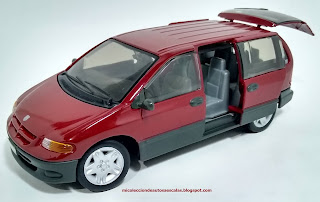The Dodge Caravan (and the long-wheelbase Dodge Grand Caravan) is a series of minivans that was manufactured by Chrysler from the 1984 to 2020 model years. The Dodge version of the Chrysler minivans, the Caravan was marketed as both a passenger van and a cargo van (the only version of the model line offered in the latter configuration). For 1987, a long-wheelbase Dodge Grand Caravan was introduced (becoming the sole version of the model line from 2008 onward). Produced for five generations across 36 model years, Dodge Caravan is the second longest-lived Dodge nameplate (exceeded only by the Dodge Charger).
Initially marketed as the Dodge counterpart of the Plymouth Voyager, the Caravan was later slotted between the Voyager and the Chrysler Town & Country, eventually serving as the lowest-price Chrysler minivan, slotted below the Chrysler Pacifica. Sold primarily in the United States and Canada, the Dodge Caravan was also marketed in Europe and other international markets under the Chrysler brand (as either the Chrysler Voyager and Chrysler Caravan). In North America, a rebranded version of the model line was sold by Volkswagen from 2009 to 2014 as the Volkswagen Routan. Ram Trucks sold a cargo-only version of the model line as the Ram C/V Tradesman.
After the 2020 model year, the Dodge Grand Caravan was discontinued, ending production on August 21, 2020. For 2021 production, the Chrysler division revived the Grand Caravan for its namesake division, using it for a Canadian-market version of the Chrysler Pacifica (an identical vehicle was marketed as the Chrysler Voyager in the United States).
For its entire production run, the Dodge Caravan/Grand Caravan was manufactured by Chrysler Canada (now FCA Canada) at its Windsor Assembly facility (Windsor, Ontario). From 1987 to 2007, the model line was also manufactured by Chrysler at its Saint Louis Assembly facility (Fenton, Missouri). Since their introduction in late 1983, over 14.6 million Chrysler minivans have been sold worldwide (including export versions and versions sold through rebranding).
























































